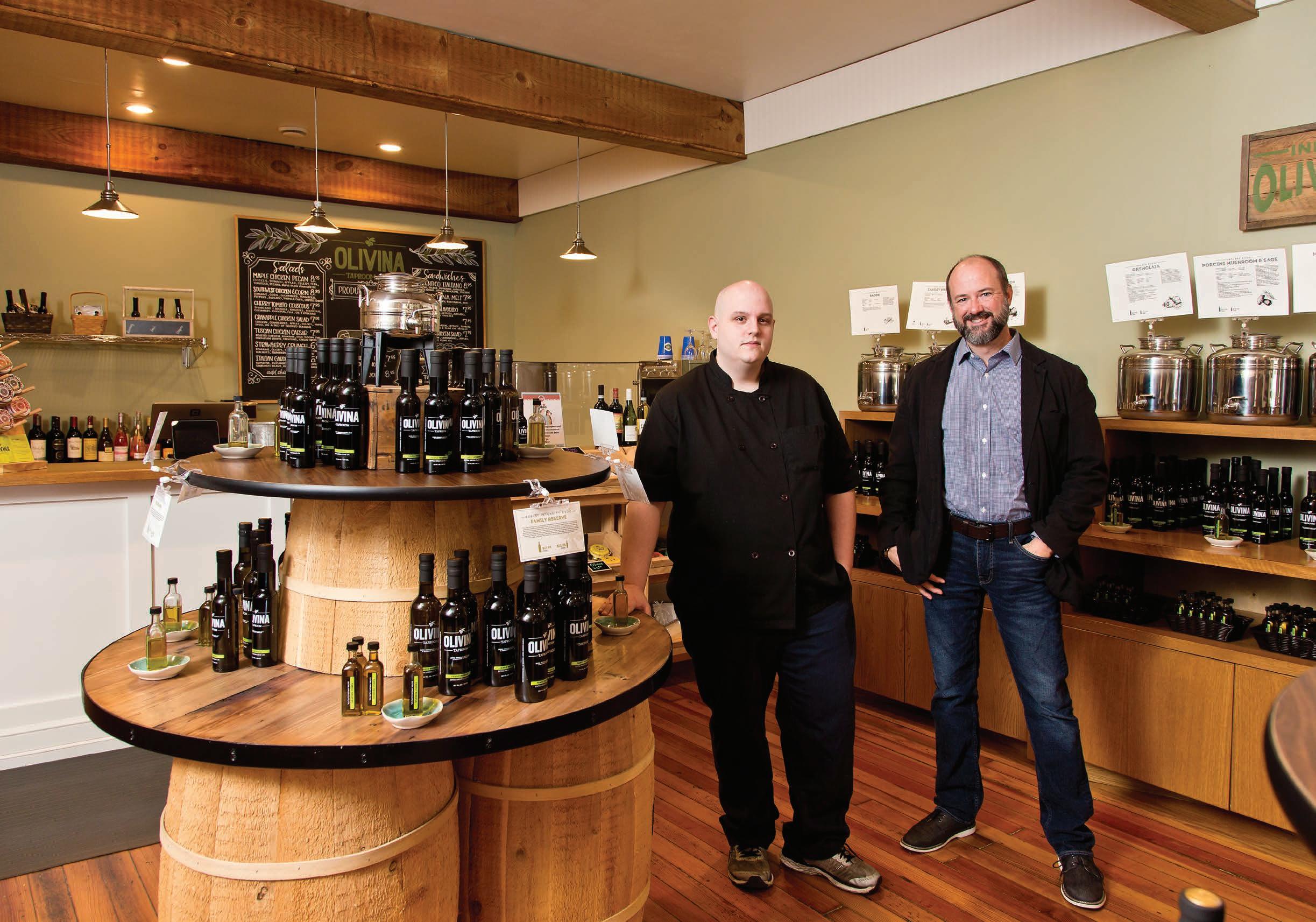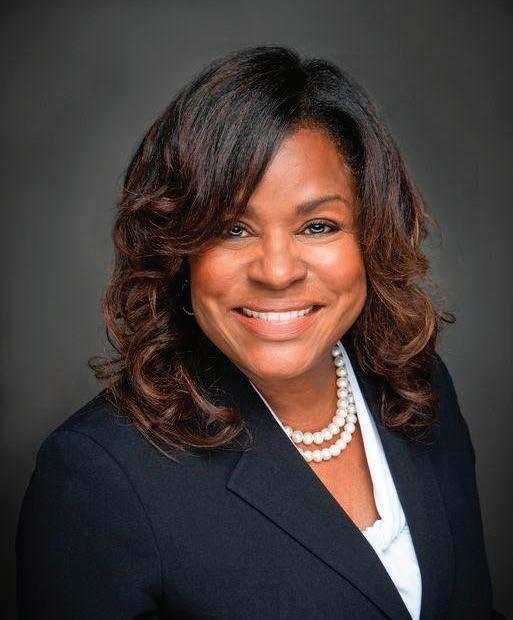
13 minute read
The right stuff
National site selectors and economic development strategists are unanimous the Columbus Region will be able to aggressively compete for expansion and relocation projects as the country works to recover from the economic turmoil related to Covid-19. Here are some of the region’s strong suits.
Smart: Top 10 U.S. metro in millennial concentration, ages 25-34
(U.S. Census Bureau, American Community Survey 1-year estimates, 2018.)
42% of people moving here are college graduates
(U.S. Census Bureau)
GrowinG: No. 1 for population, job and GDP growth in the Midwest
(U.S. Census Bureau Population Estimates, 2010-2019; U.S. Bureau of Labor Statistics, 2010-2019 annual averages, not seasonally adjusted; U.S. Bureau of Economic Analysis, real GDP, 2010-2018.)
+1 million projected population growth by 2050
(MORPC Insight 2050 report)
BuSineSS oriented: Reach 46% of U.S. population in a one-day drive
(ESRI Business Analyst, 2019, based on 10-hour drive time)
No corporate income tax and no personal property tax
(Department of Taxation)
GloBal: 302 foreign establishments with over 60,000 employees
(Columbus Council on World Affairs)
80+ languages spoken
(Columbus Council on World Affairs)
ConneCted: FTZ #138 is one of the 10 most active in the U.S.
(Columbus Regional Airport Authority)
One of the world’s only cargo-dedicated airports
(Columbus Regional Airport Authority)
open: No. 1 opportunity city
by Forbes
Headquarters here have perfect scores on the Human Rights Campaign Corporate Equality Index
She’s worked with One Columbus on two economic development strategies when she was with a different consulting firm that has since joined Ernst & Young LLC to lead its national economic development practice. Most recently, she and her team assisted One Columbus with its new 10-year strategy.
Holloway says the region has three characteristics that make it particularly strong in moments of crisis—corporate leadership, experienced resilience and its value proposition.
Corporate leadership—The region
Amy HollowAy Ernst & Young’s U.S. economic development advisory services national director, Austin
Top Mid-Size Cities for New Projects
Boise, ID Colorado Springs, CO Columbia, SC Columbus, OH
Greenville, SC Huntsville, AL Indianapolis, IN Kansas City, MO Raleigh-Durham, NC Reno, NV Tucson, AZ
Source: Site Selectors Guild (listed in alphabetical order) is one of the best in the nation at having a strong group of private sector leaders who are driving economic development. CEOs from across the region, especially through the involvement of the Columbus Partnership, are willing to be engaged, collaborate and take on tough challenges with others.
“We work with organizations like One Columbus across the country. When I’m asked to give an example of a community with strong corporate leadership guiding economic development, the Columbus Region is the example that I most often cite,” Holloway says. “The collaboration between the Columbus Partnership and One Columbus in the prioritization of economic development is fairly unique nationally.”
That’s important because when companies are scouting for a new location, they will consider whether the community is unified in its vision and goals for the future.
Experienced resilience—The Columbus Region was hard hit during the Great Recession and leveraged that moment to unify its approach to economic development and “go bold,” Holloway says. “They exceeded all of their (jobs and population growth) goals over the last decade. I anticipate that muscle memory will help them rebound from this.”
A more recent example of the community’s resilience was the effort to keep the Columbus Crew professional soccer team in town. Under the leadership of Alex Fischer at the Columbus Partnership, the community “stepped up and took bold action. Not every community has a leadership body that can quickly unify and accomplish something like that,” she says.
Value proposition—The Columbus Region has a rare combination of a large pool of skilled talent, quality of life and relative affordability of housing and goods and services. That should allow it to recover from the recession by competing nationally for projects, she says, including with peer cities in Austin, Seattle, Minneapolis and Nashville.


Laura Newpoff is a freelance writer.

BUILDING IT TAKES ALL OF US.


As a top integrated communications company with proven economic development experience, we unite diverse talents and disciplines to make great things happen—for our clients, our communities and beyond.

Learn more about our economic development leadership at FAHLGRENMORTINE.COM FAHLGREN MORTINE


Subscribe to


Columbus Monthly is among the best city magazines in the country.
Don’t take our word for it. Ask the national City and Regional Magazine Association, which honored Columbus Monthly with first-place honors for general excellence in 2018 (we were among the top five magazines in 2020, 2019 and 2017) for our circulation size. Subscribe and you’ll get 12 issues of Columbus Monthly, plus six niche pubs. That’s a lot of award-winning journalism for $1.50 a month.
SUBSCRIBER EXCLUSIVE! Here’s what’s in store for you with a one-year subscription:
• 12 issues of Columbus Monthly • 2 issues of Home & Garden • 1 issue of Restaurant Guide • 1 issue of Best Driving Vacations • 1 issue of Giving • 1 issue of Health • 200,000 Dispatch Rewards points to win tickets, gift cards and other great prizes


Subscribe or renew your annual subscription to Columbus Monthly for $18. Go to columbusmonthly.com or call 877-688-8009.
moving forward with optimism
Communities of innovation When the economy was revived in May, the Columbus Region came back strong: People helping other people, smart ideas for supporting businesses and a communal desire to get things back on track for the good of all.
By Laura Newpoff
Delaware County
Not just a pandemic, but a major flood brings community together
Olivina Taproom sits in the heart of downtown Delaware, just a stone’s throw from the historic Ohio Wesleyan University to its south. Immediately to its north is the Delaware Run, a 6-mile tributary that empties into the Olentangy River to the east and is known for its chronic problems with flooding.
Chris Schobert opened the store in 2016 to sell high-end extra virgin olive oils and balsamic vinegars and host cooking classes for the community. Like other retailers, the business was hit hard by a drop in sales because of Covid-19, but optimism about the future came “The speed of survival— the city recognized the our own.” on May 19 when Gov. Mike DeWine lifted Ohio’s “Safe At Home” order. In a cruel twist of fate, that was the same day record torrential rains caused the tributary to flood wildly. Schobert’s store would not be spared.
The following day he called off from his full-time job at a local credit union so he could survey the damage. Schobert describes what he saw as “just a disaster.” Mud— and it was thick—was everywhere. The flow of water through the store had been so violent that it shook the building, causing ceiling tiles to fall from a storage room in the back and be swept all the way to the front of the store. Garbage cans were toppled. Debris was everywhere. Inventory was destroyed. The walls were ruined. The floors, which Schobert had just had refurbished for thousands of dollars, were trashed.
“It was heartbreaking and devastating,” Schobert says. “I put my life savings into trying to build up that store. You can only take so much as a business owner. You question, ‘Is this a sign from God that maybe I should just shut it down? Let’s just not do this


Olivina Taproom Executive Chef Michael Turner and owner Chris Schobert
As he was cleaning up the muck, in another twist of fate, a group of people who had heard about the flooding felt compelled to stop by and asked what they could do to help. Wave after wave of other good Samaritans would join them over the next week to help Schobert clean up the mess. Others would drop off pizzas, supplies and personal protective equipment to keep everyone safe. Another person donated a dehumidifier. The gestures were so uplifting that Schobert decided to press forward with Olivina.
Just to the north of Schobert’s store sits Delaware City Hall. Officials there had a front-row view of the aftermath of the flood. To get help out quickly, the city created a “COVID-19 & Spring Flood Small Business Recovery Grant Program.” Local businesses like Schobert’s were urged to apply. Just three weeks after the program was approved by City Council, the first check went out—to Olivina Taproom. Schobert, in fact, got the $2,529 just 10 days after he signed his application.
“It was an amazing moment,” he says. “You never think a government can move that quickly. It was exactly what we needed at the time we needed it.” The money was used to pay expenses to get the store up and running again. Schobert also has obtained two liquor licenses and has opened a café at the store to help boost revenue that’s down 32 percent year over year.
Delaware Community Affairs Director Lee Yoakum says larger businesses were able to handle the initial shock of the pandemic, but smaller businesses needed help. So Delaware created the grant program by tapping into money it had in a development reserve fund set up by City Council several years ago to support economic development.
“The speed of survival—the city
rob hardin recognized the need,” he says. “This was getting the job done on our own. Like a Marshall Plan on a local scale.”
The program awarded about $84,000 to 33 businesses to help them cover expenses related to the pandemic and flooding.
In August, the city approved a $300,000 loan fund to bolster the city’s small businesses, which is administered by the Economic and Community Development Institute.
In October, a second round of recovery grants totaling $300,000 was approved for the fall that allows small businesses to apply for up to $10,000 to pay for eligible costs like mortgage payments that were missed, PPE, equipment to extend the outdoor dining season and materials and equipment to allow for safe social distancing. Olivina, in fact, will receive money from this second round to pay bills and to stock up its inventory for the holidays.
“More than once we used the
Who’s moving and shaking this Week?
Find out when you become a Columbus Ceo insider sign-up today at ColumbusCeo.com



analogy of our small business sector being in a kind of intensive care and whatever we could do to nurse them along, we tried to do,” Yoakum says.
Sean Hughes, the city’s economic development director, said that even though Delaware has been growing rapidly over the years the city still has a small community vibe where leaders take the time to get to know business owners.
“What hurts them ultimately hurts us and hurts us personally not just economically,” he says. “What it came down to was not seeing yourself as two separate entities, but rather seeing each other as partners. That’s how you have success in a community.”
Franklin County
Historic partnership springs up to support Black-owned businesses
The Black community has been disproportionately impacted by the pandemic from a health care

Proud To Call Columbus Home 20+ YEARS OF HOSPITALITY INVESTING & WE’RE JUST GETTING STARTED
266 ASSETS
$8.6B CAPITALIZATION
rockbridgecapital.com
Rockbridge Capital LLC is a federally registered investment t advi v ser under the Invest tment m Advisers Act of 1940, as amended. This does not constitute an o er to to buy or sell securities or a any othe her r o er of investment advice. Dollars capitalized and number of o inv nvestm ments above are acroscoss multi iple investment structures.

Keena smitH, chief economic equity and inclusion officer for Franklin County
standpoint and from a financial one. Considering how under-banked Black-owned businesses are, it wasn’t shocking that less than 2 percent of them nationally received loans from the federal Paycheck Protection Program and more than half weren’t expected to survive because of the economic fallout of the pandemic. Those statistics helped lead to the creation of a historic partnership among Franklin County, economic development group One Columbus and social justice and racial equity advocate Columbus Urban League.
Announced in August, the Franklin County Business Growth and Equity Alliance was formed to establish the Franklin County Community Equity Fund. That lays the foundation for a Community Development Financing Institution that will provide grants to small, Black-owned businesses.
In October, the Equity Alliance announced that it had awarded grants totaling $1.62 million to 65 local small businesses, nearly twothirds of which did not receive PPP loans. Most of the funding will be dedicated to payroll, helping to retain or create 250 jobs.
Keena Smith, chief economic equity and inclusion officer for Franklin County, says improving access to capital is the No. 1 goal of the alliance. That will include building a big table where community leaders, entrepreneurs and lending institutions come together to figure out “this wicked problem of lack of access.” The new Equity Alliance is a milestone on a trail the county has been paving for several years and builds upon its “Innovating New Pathways to More Equitable Prosperity” initiative that is working to make the community “vibrant, sustainable and livable for all.”
“There’s an intentionality about this that wasn’t there previously,” Smith says. “We want this new alliance to be accessible and trusted by those who have been historically marginalized.”
Stephanie Hightower, president and CEO of the Columbus Urban League, says the pandemic, plus the social unrest tied to the murders of unarmed Black men, have created
Stephanie Hightower
new platforms to talk about racial injustice and to increase awareness in the community that Black businesses don’t operate on a level playing field when it comes to access to capital.
In addition to its role in the new Equity Alliance, the organization’s Minority Small Business Resiliency Initiative has helped more than 1,800 of its clients access more than $6.5 million in grants and loans since April to save at least 1,000 jobs.
“This is a great opportunity to really have crucial conversations in a productive way so that people don’t continue to look at the Urban League and the work we do as a reminder of the stain of slavery,” Hightower says. “We want people to look at us as that economic engine that has the ability to help level the playing field for many people who haven’t had that opportunity for over 100 years in this country. We are leaning into this.” Logan County

New funding for distressed communities boosts manufacturers
For the past two years, The Ohio Wire Harness LLC has been manufacturing a line of cable assemblies and wire harnesses at




